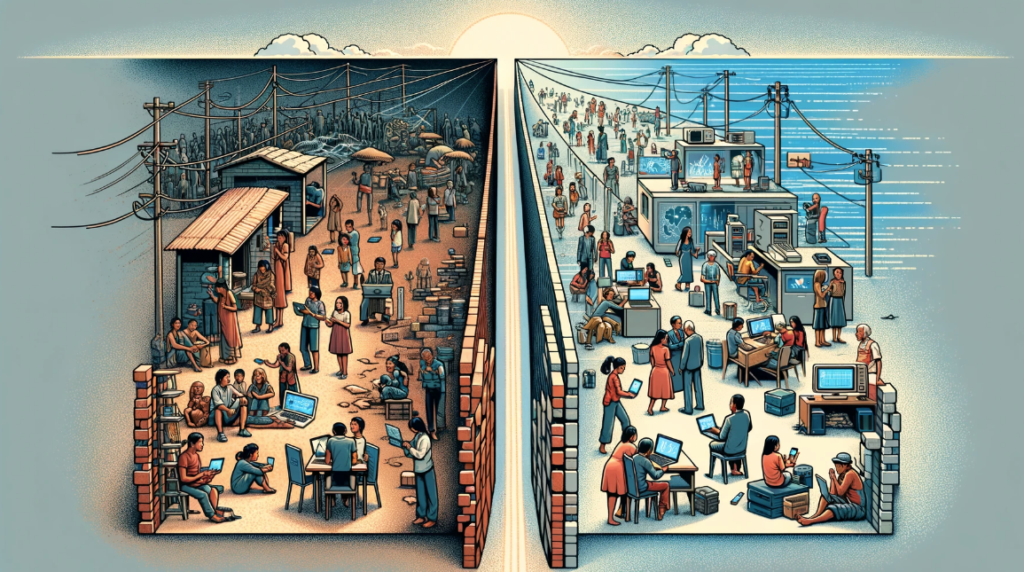Lesson 17. The Digital Divide (デジタルディバイド)

▮ Explanatory Text:
The digital divide refers to the gap between individuals, households, businesses, and geographic areas at different socio-economic levels with regard both to their opportunities to access information and communication technologies (ICTs) and to their use of the Internet for a wide variety of activities. This divide not only affects the ability to access online resources but also impacts education, healthcare, and employment opportunities, contributing to a cycle of inequality. Addressing the digital divide requires comprehensive strategies that include improving infrastructure, enhancing digital literacy, and ensuring affordable access to technology. This topic explores the causes, effects, and potential solutions to bridge the digital divide and create a more inclusive digital world.
▮ Common Phrases:
1. Bridging the digital divide involves…
2. Access to technology is crucial for…
3. Digital literacy is important because…
4. The lack of internet access in rural areas…
5. Inclusive technology solutions include…
▮ Example Sentences:
1. Bridging the digital divide involves improving internet infrastructure and making technology more affordable.
2. Access to technology is crucial for participating in the modern economy and accessing educational resources.
3. Digital literacy is important because it empowers individuals to use technology effectively and safely.
4. The lack of internet access in rural areas limits educational and economic opportunities for residents.
5. Inclusive technology solutions include programs that provide devices and training to underserved communities.
▮ Questions:
1. What are the main factors contributing to the digital divide, and how do they vary across different regions?
This question encourages learners to discuss the multifaceted causes of the digital divide, including economic, geographic, and social factors.
2. How does the digital divide impact education and employment opportunities?
Participants explore the consequences of the digital divide on individuals’ ability to access education and compete in the job market.
3. What role can governments and private organizations play in addressing the digital divide?
This prompts a discussion on the responsibilities and potential actions of public and private sectors in bridging the digital divide.
4. Discuss the importance of digital literacy in overcoming the digital divide. What strategies can be employed to enhance digital literacy?
Learners examine the role of digital literacy in empowering individuals to benefit from technology and consider approaches to improve digital skills.
5. Can you share examples of successful initiatives or projects that have helped to bridge the digital divide? What lessons can be learned from these examples?
This question invites learners to share real-world examples of effective solutions to the digital divide and analyze the factors that contributed to their success.
▮ Discussion Instructions:
Choose an aspect of the digital divide that interests you or that you believe is particularly important. Discuss the scope of the problem, including who is affected and how, as well as potential solutions or strategies that could help to bridge the gap. Reflect on the role of technology in society and how ensuring equitable access can contribute to social and economic development.







